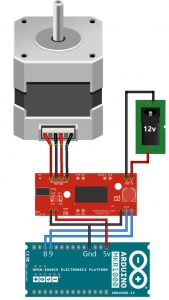A wifi-connected high-precision camera slider, controllable from any web browser. Easily capture smooth sliding video shots or time lapses.
Story
My name is Ben Brandt, and I run a YouTube channel as a hobby to share my various DIY projects (like this one) as well as woodworking, metal work, and making things in general.
In my quest to make better video, I wanted to be able to make long sliding/panning shots. You can buy camera sliders, tracks, and dollies (or make them in my case), but you usually need somebody to physically move the camera. As a one-man operation, this is difficult if I want to be in the video. Also, I want to do some long, moving/panning time-lapse video, but I didn’t have a good way to move the camera at a very slow and consistent speed. There are motorized camera dollies available, but as an amateur they’re far out of my budget.
This is where my project (what I’m calling the Video Tether) comes in.
Hardware
The hardware is relatively simple. To move the camera dolly in a controlled precise manner, a stepper motor turns a small timing belt pulley, which pulls on a long length of timing belt, which is attached to the camera dolly.
The timing belt and pulley work well because the belt doesn’t stretch (much) and we know the precise spacing of the teeth. This is the same kind of hardware used on 3D printers and CNC based machines.
Typically on a device like this the belt is looped around two fixed pulleys, but that limits the overall length of your track system. With this configuration, you can adjust the length of your belt and track however you want, and you can connect it to almost any kind of camera slider system.
For my setup, I got a 15-foot long length of belt on eBay along with some pulleys. The stepper motor was salvaged from some old electronics (I don’t remember what). The shaft is the right size for the pulley, and it’s a strong little motor.
To keep the belt engaged with the teeth of the pulley, a smooth bearing keeps the belt pressed up against the side of the pulley. This bearing sits on one end of a lever-style mechanism, with a rubber band on the other end to provide the force to keep it against the pulley. This can be easily released to feed the belt through by hand.
Read more: Wifi-Controlled Precision Camera Slider


